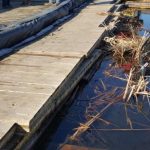Today’s industries often produce parts and components that are unfinished. They may be bare, rough metal surfaces. These cannot be put into service without some form of protection. This may be a temporary measure – a means of protecting the part between assembly and processing, or shipping and storage. It can also be the more permanent protection needed to ensure the part functions within its allocated environment. An anti rust coating falls into this latter category.
What Are Anti-Rust Coatings?
Anti-rust coatings are a form of value added protective measures. Fabricators apply it in thin films, although some manufacturers may prefer other means. The material may be organic or inorganic. It can be metal or non-metal. Whatever the method or the material, anti-rust coatings serve a singular purpose. They protect the surface of the substrate from corrosive elements.
How to Select an Anti Rust Coating
If your company plans to protect its components from oxidization, it needs to make certain the anti rust coating it selects is the right one. To arrive at the best suitable combination of base metal and surface coating, it is important to do more than understand the purpose and the process. You need to ask the right questions of the fabricator and yourself.
* What metal or metals are best suited for the process?
* What is the longevity of the protective metal coating? How does this compare with the requirements of your component?
* What application methods are available?
* Can you remove the anti rust coating? How?
* Is it suitable for the type of environment in which the part will function e.g. marine, industrial?
* Is the coating able to withstand the temperatures and other atmospheric conditions of the environment in which the part will function or, perhaps, the period of exposure?
These and other factors, such as the length of exposure and the shape of the part help govern the selection by your company and the fabricator of the most suitable anti rust coating option.








